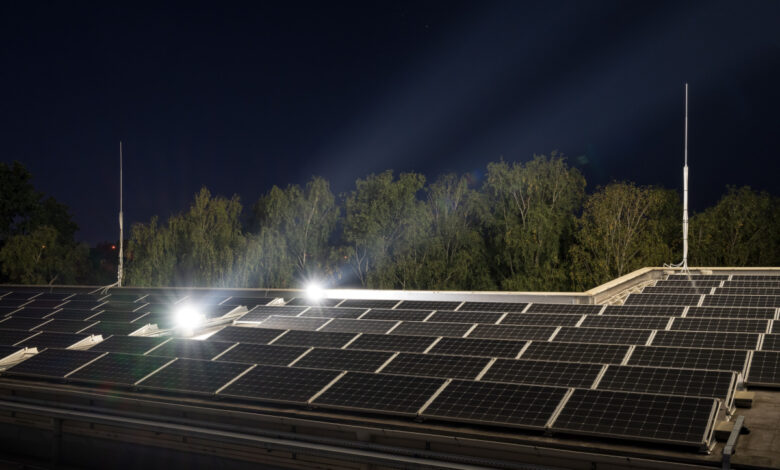Lebanese engineer Raja Yazigi has embarked on a visionary quest to reshape the energy landscape through his revolutionary invention—a solar panel that defies convention by generating electricity not only during the day but also throughout the night. Unlike traditional photovoltaic solar panels reliant on visible natural light, which poses inherent limitations due to its intermittent availability, Yazigi’s groundbreaking solution holds the potential to transform the renewable energy sector. The intermittent nature of current solar technology not only results in increased costs due to the necessity for substantial storage devices but also demands oversized installations to compensate for gaps in electricity production during nighttime or inclement weather, leading to complex space management challenges.
Looking to the future, Yazigi is strategically advancing his focus towards developing functional prototypes, establishing collaborations with esteemed laboratories in France for this critical phase. Proactively seeking partnerships to secure a substantial funding of at least €5,178,000, the inventive engineer envisions the first samples of photovoltaic modules showcasing this groundbreaking technology to commence production within a conservative two-year timeframe. Targeting the business-to-business (B2B) market, Yazigi identifies solar energy professionals, including cell producers, as the primary audience. This strategic approach emphasizes not only the commercial viability of the technology but also underscores its potential to be seamlessly integrated into existing solar energy ecosystems. By making this groundbreaking solar technology accessible to established players in the renewable energy sector, Yazigi’s innovation holds the promise of not only transforming the renewable energy landscape but also contributing significantly to the realms of energy sustainability and environmental conservation.
Yazigi’s innovative solar cell operates on the principle that the Earth receives solar energy during the day in the form of visible light waves, subsequently re-emitted as infrared waves at night. This unique feature enables the solar panel to harness solar energy continuously, addressing a longstanding challenge in traditional photovoltaic technology. While the engineer remains discreet about the composition of the solar cell to safeguard his invention, he has revealed that the synthetic element he created surpasses traditional silicon, the primary material in most current solar panels. The new material exhibits superior photoconductivity properties, producing more electric current for the same unit of received energy.

As Raja Yazigi progresses towards developing functional prototypes, he is set to collaborate with laboratories in France for this critical phase. Actively seeking partnerships for funding, the inventor aims to secure at least €5,178,000, earmarked for advancing the project. Projections indicate that the first samples of photovoltaic modules featuring this groundbreaking technology will enter production within two years. Targeting the business-to-business (B2B) market, Yazigi envisions solar energy professionals, such as cell producers, as potential clients. This ambitious endeavor not only holds the promise of transforming the renewable energy landscape but also contributes positively to energy sustainability and environmental conservation. By actively engaging key stakeholders in the solar energy industry, Yazigi’s vision transcends technological innovation to potentially catalyze a broader shift towards cleaner and more sustainable energy practices on a global scale.
Yazigi’s innovative solution addresses these challenges head-on, presenting a solar cell capable of harnessing solar energy continuously, both day and night. The physicist and engineer’s invention leverage the fact that the Earth receives solar energy during the day in the form of visible light waves, which are then re-emitted at night as infrared waves. This novel solar cell is adept at harnessing both types of waves, producing electricity even during nighttime hours. By capitalizing on this dual-mode functionality, Yazigi’s invention not only promises to overcome the limitations of traditional photovoltaic solar panels but also introduces a groundbreaking approach to sustainable energy production. This potential paradigm shift holds immense significance in advancing the global transition towards renewable energy sources, offering a viable solution to the challenges posed by the intermittent nature of current solar technologies. If successfully realized, this innovative solar cell could play a pivotal role in reshaping the future of energy production and contribute significantly to a more sustainable and environmentally conscious world.
While the engineer remains discreet about the composition of the solar cell to protect his invention, he revealed that the synthetic element he created outperforms traditional silicon, the primary material in most current solar panels. The new material exhibits superior photoconductivity properties, generating more electric current for the same unit of received energy. Importantly, Yazigi asserts that the research phase is already completed.

Looking ahead, Raja Yazigi is strategically redirecting his efforts towards the development of functional prototypes, and for this critical phase, he plans to form collaborations with reputable laboratories in France. To propel this groundbreaking project forward, the inventive engineer is proactively seeking partnerships to secure a substantial funding of at least €5,178,000. This financial backing is pivotal for advancing the technological development and ensuring the successful transition from concept to tangible, market-ready products. According to his well-thought-out timeline, Yazigi envisions that the inaugural samples of photovoltaic modules, showcasing the capabilities of this innovative solar technology, will commence production within a conservative two-year timeframe.
Focusing on the business-to-business (B2B) market, Yazigi strategically identifies solar energy professionals, including cell producers, as the primary target audience. By doing so, he aims to forge partnerships with industry leaders, envisioning companies like Suntech, a prominent Chinese solar panel manufacturer, as potential clients. This strategic approach not only emphasizes the commercial viability of the technology but also underscores its potential to be seamlessly integrated into existing solar energy ecosystems. By making this groundbreaking solar technology accessible to established players in the renewable energy sector, Yazigi’s innovation holds the promise of not only transforming the renewable energy landscape but also contributing significantly to the realms of energy sustainability and environmental conservation.
For more information about this innovating Solar Energy solution; please contact us HERE!
Related Content
- McDonald’s introducing a host of environmentally conscious features aimed at enhancing energy efficiency and visitor convenience
- New ways we’re helping reduce transportation and energy emissions
- ‘Detached from reality’: anger as Rishi Sunak plans to restrict solar panels
- ‘Staggering’ green growth gives hope for 1.5C, says global energy head
- The countdown has begun! Earth’s oxygen on the brink of disappearance?A study warns of the end of life on Earth due to a sudden deoxygenation. Why and when will this happen?
- COP28: Mobilizing the Innovation Ecosystem to Facilitate Concrete Climate Action
- The Onsite Energy Marketplace and Software Platform
- SAVANT POWER STORAGE – Energy reliability for the things that matter most
- World’s leading technology platform for managing distributed and flexible energy resources
